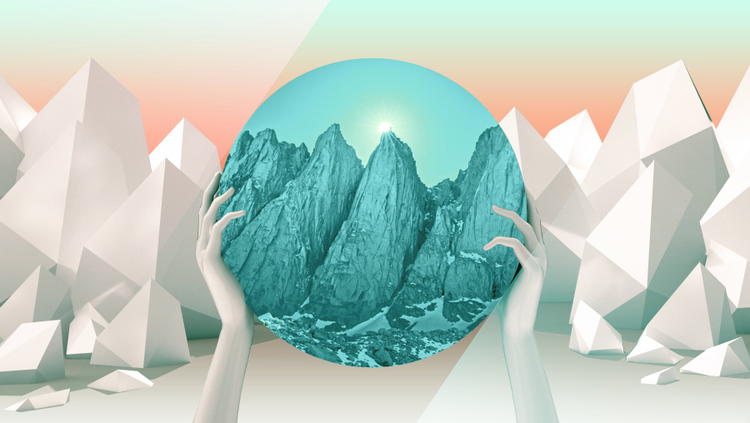Project Felix 0.3: 3-D Compositing Made Even Easier

Project Felix 0.3 is here.
Project Felix is a new Adobe application that makes it easy to composite 3-D objects with 2-D images. Our goal is to open up the world of 3-D design to individuals without previous 3-D design experience.
Our latest update — Project Felix 0.3 — is all about efficiency and workflow improvements. Over the last 6 months, we’ve been gathering user feedback. We’ve used your comments and suggestions to add the features that you’ve requested in each update of the application.
We’ve improved lighting, added a bookmarks feature, engineered a more intuitive user interface that aligns with the Adobe applications you use everyday, and cut down on the time it takes to render a project.
Major advances in outdoor lighting
Light is a central element of rendering 3-D objects. In a previous post, we discussed how light is used in Project Felix. In this release, we’re working with light in new ways.
“Historically, the lighting tool in Project Felix has been mostly an image-based technique to relay the light from an image,” J. Eisenmann, our computer scientist on indoor/outdoor lighting says. “In this update we’re looking at the image, and we’ve trained some convolutional neural networks to actually reproduce physical lighting for a scene.”
A fully digital scene of a room and furniture is lit by a photographic background image and the automatic light matching in Project Felix. By Vladimir Petkovic.
Most of us aren’t experts in convolutional neural networks — or even know exactly what that means — but anyone can see the benefits that come from this technology. Now, the lighting tools in Project Felix can better replicate all of the ways light interacts with objects in the scene, creating a more realistic image overall. Justin Patton, our art director for Project Felix, sees this feature being useful in a variety of different ways.
“This technology can actually find the sun direction, even if the sun isn’t in the image, and create direct sunlight, which gives you direct control over the intensity of the sun,” he says. “Ultimately, it allows you to composite a 3-D object with your 2-D image in a way that looks even more realistic than before.”
Save your position in 3-D space with bookmarks
The bookmark feature was developed from detailed user feedback. You asked for it, and we delivered.
Felix’s Senior Experience Designer Tyler Lafreniere anticipated the need for a bookmark-like tool in our early planning stages. With user feedback, he was able to help incorporate the tool into this version of Project Felix.
“We’d heard a lot from users on the need for a bookmarking tool,” Tyler says. “They really needed a way to get back to a view they really like, and to do so efficiently. We hope this technology is going to massively improve the user experience. That’s what it’s all about.”
Bookmarked camera views are used to save multiple shots of the same scene so the designer can return to the shot, update the image, and render with ease. By Justin Patton.
With bookmarks, you have the ability to save and return to any kind of stored view. Even for a seasoned 3-D user, it can take time to get that perfect shot. Unlike 2-D, you need to keep moving and rotating around the object to understand the space. This means selecting different cameras and moving the view around to see the object from different angles — a seemingly infinite number of combinations, each resulting in a unique view of the object.
In 3-D, the changes you make affect the way your project looks in each of these various shots. For example, you may make a change in view combination 37 and want to see how that affects view combination 124. Without bookmarks, you would have to do your best to recreate that exact combination from memory.
The bookmarks tool lets you save specific views and go back to them with the click of a button. This allows you to quickly work between multiple angles without reinventing each shot. The ability to create bookmarks gives users the chance to work much faster and improve their workflow.
Create new art with Project Felix
For those of you returning to Project Felix, we’re excited to share this update with you. Thank you to all of our users who have participated in discussions and interviews. Your feedback truly fuels our design. If you’re new to Project Felix, we welcome your creativity and new voices in our user forums.
As a front-end engineer, Alex Fischer bridges the gap between design and programming and is deeply involved in crafting the user experience. “We look at the forums. We concentrate on what users are saying, and we form our product based off what people say they want,” he says. “It really is a collaborative effort between our team and our users.”
An abstract city of bottles experiments with vibrant colors and shows how lighting can be playful as well as realistic. By Vladimir Petkovic.
We’ve already seen users produce amazing designs in Project Felix, and can’t wait to see what you create with our latest update. Here’s a final thought from Justin:
“3-D is like a playground. You have this world of objects and materials that all interact together. You constantly come across new and interesting things that you didn’t even set out to create initially. With Project Felix 0.3, there are so many opportunities for experimentation and discovery. I think we’ll start to see new types of art being created, and that’s the reason we do what we do.”
**_Want to Become Involved?
_**Learn more about how you can get creative with Project Felix by downloading the beta app, and then visit the UserVoice forum to share your feedback.